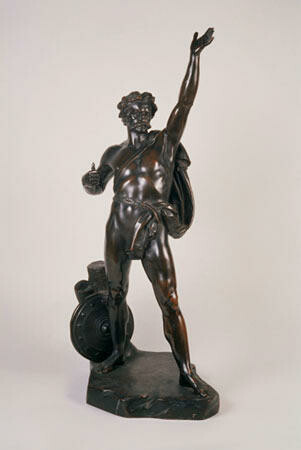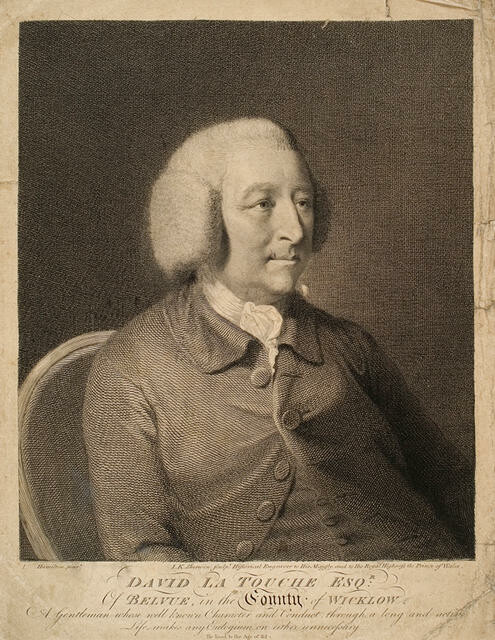John Foley
Ireland, b.1818, d.1874
Caractacus
- 1860
- Bronze
- Christchurch Art Gallery Foundation Collection, purchased 1996
- 810 x 410 x 305mm
- L96/15
Tags: cloaks, kings (people), men (male humans), nudes (representations), people (agents), royalty (nobility), shields (armor)
Caractacus was an early chieftain of the Britons, celebrated in eighteenth- and nineteenth-century British art and literature for resisting the Romans. Dublin-born, London-based sculptor John Henry Foley cast this bronze statuette the year after his original two-metre-high version in white marble was installed in the Egyptian Hall at the Lord Mayor of London’s Mansion House residence.
(Out of Time, 23 September 2023 – 28 April 2024)
Exhibition History
Caractacus is the name the Romans gave to Carador, the King of an ancient British tribe in South Wales from 43 to 50 AD, who had initially fought successfully against the invading Roman armies. When he was eventually captured, Claudius, the Emperor, was so impressed by the warrior king that he granted his release. This type of noble subject, with classical connections, was very popular in Victorian Britain. John Foley has worked in the classical style favoured by the British and French Academies. Foley was born in Dublin, the son of a grocer. He studied art at the Royal Society School, Dublin, where he was highly successful and, in 1834, gained entry to the Royal Academy Schools in London. Foley had notable success as a sculptor and produced over 60 statues, busts and monuments. He was a favourite of Queen Victoria and was commissioned by her to make his most celebrated work, the Albert Memorial, in Hyde Park, London. Unfortunately he caught a chill working on the Memorial and died before it was completed.
(Label date unknown)
![Andreas Cellarius Hypothesis Ptolemaica Sive Communis Planetarum Motus Per Eccentricos Et Epicyclos Demonstrans [The Ptolemaic Hypothesis or Common Representation Demonstrating the Planetary Motions through Eccentrics and Epicycles] 1661. Hand-coloured engraving. Collection of Christchurch Art Gallery Te Puna o Waiwhetū, William A. Sutton bequest, 2000](/media/cache/05/97/05970cdff0f6b3264062d69bf2aa90f5.jpg)

